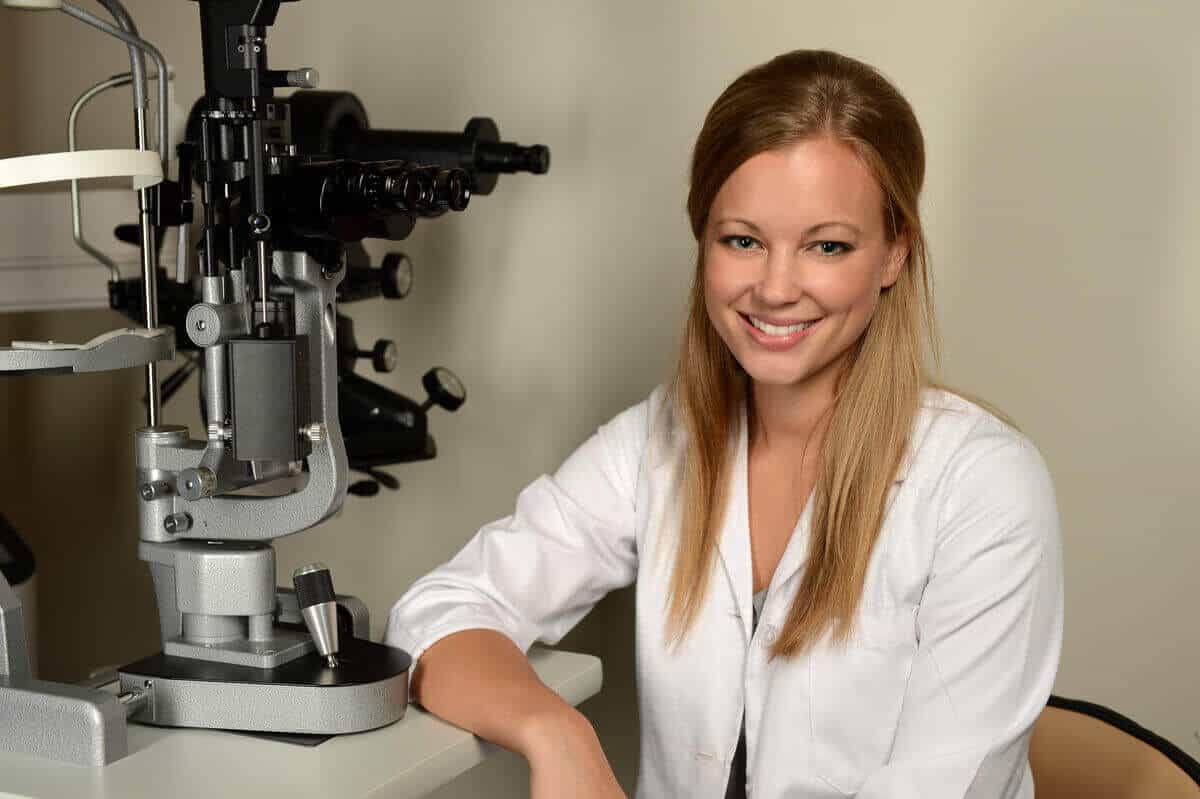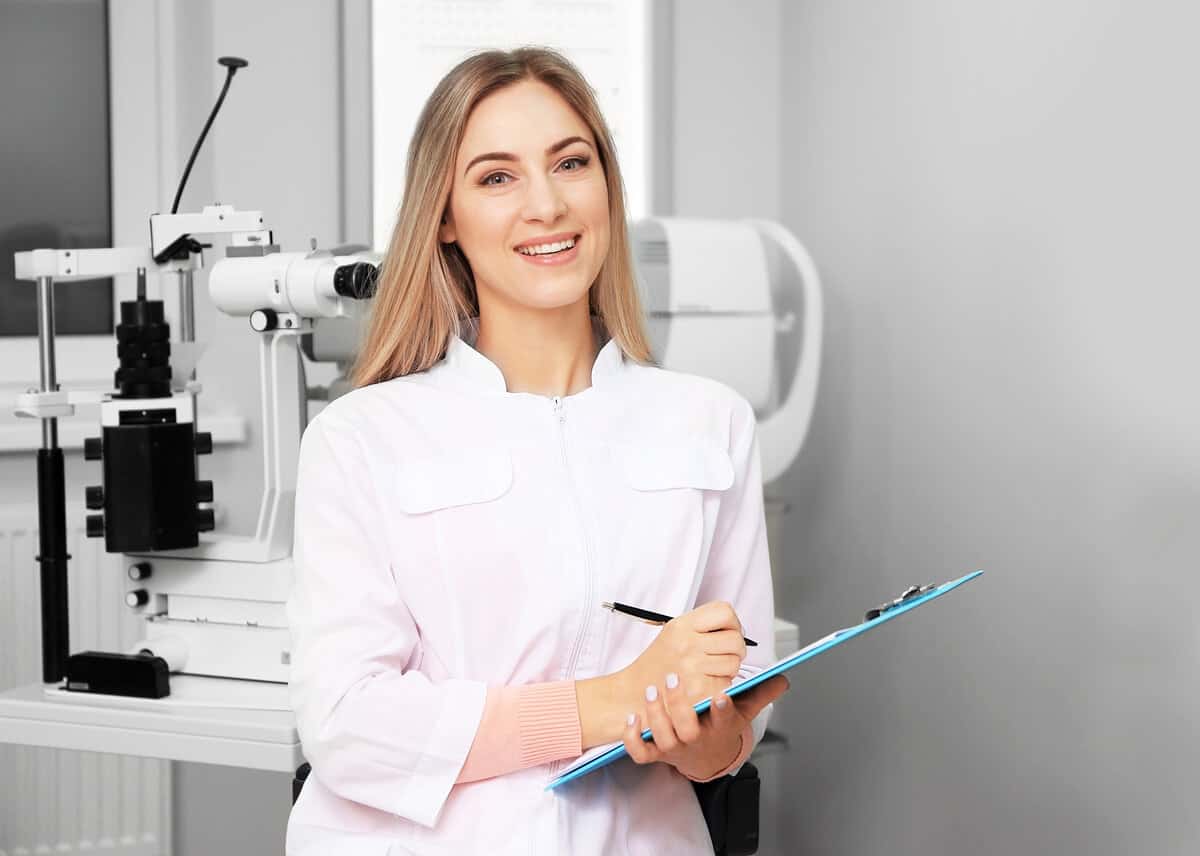High Eye Pressure Alert: Ocular Hypertension Vs. Glaucoma (What You Must Know)
Have you ever heard the terms “ocular hypertension” and “glaucoma” during an eye exam? They can sound scary, and it’s natural to wonder what they mean for your vision. But don’t worry; this isn’t the end of the story. The truth is that understanding ocular hypertension vs. glaucoma is crucial for protecting your precious sight.
This article will guide you, explaining the key differences between these conditions, the risk factors involved, and the importance of early detection.
By the end, you’ll be equipped with the knowledge to have informed conversations with your eye doctor and take charge of your eye health. So, let’s delve into the world of eye pressure and navigate this together!
Eye On The Pressure: Ocular Hypertension Vs. Glaucoma
Think of your eye as a cool, self-contained world. A clear fluid called aqueous humour keeps everything inside happy and healthy. But sometimes, the drainage system gets a little clogged up, causing pressure to build. This is what happens with ocular hypertension. Here’s the good news: ocular hypertension itself isn’t a disease. Your vision’s probably A-OK, and the nerve that sends all those cool images to your brain (the optic nerve) seems healthy, too.

That’s why regular eye exams are your best friend, especially if you have ocular hypertension. Your eye doctor can be your eye health superhero, monitoring your intraocular pressure (IOP) and optic nerve health to catch any early signs of glaucoma before it becomes a villain.
Understanding The Culprit: What Causes Glaucoma?
The exact culprit behind glaucoma isn’t entirely known, but there are a few sneaky suspects:
- The Pressure Gang: Chronically high eye pressure is the main adversary. In some cases, even normal eye pressure can lead to optic nerve damage in certain individuals.
- Family History: Genetics can play a role. If you have a close relative with glaucoma, you might be more susceptible.
- Age Disadvantage: Unfortunately, the risk of glaucoma increases as we celebrate more birthdays, especially after 40.
- The Body’s Battlefield: Medical conditions like diabetes and high blood pressure can up the risk factor.
- Eye Anatomy: Have you ever heard of a narrow drainage angle? This can hinder fluid flow and contribute to pressure buildup.
- Medications In The Mix: Certain medications, like steroids, can sometimes cause temporary or long-term pressure spikes.
Remember, this isn’t an exhaustive list, and some folks might have a combination of these risk factors. The key takeaway? Knowing your situation and talking to your eye doctor if you have any concerns is important.
The Silent Threat: Recognising Glaucoma’s Signs
Glaucoma can be a sneaky villain, often progressing without any noticeable symptoms in its early stages. That’s why routine eye exams are so crucial for early detection. However, in some advanced cases, you might experience:
- Blind Spots On The Periphery: Patchy blind spots creep into your side vision, especially in one eye at first.
- Tunnel Vision Woes: You feel like you’re peering through a narrow tube—not the best way to see the world!
- Eye Emergency Alert: You have sudden and severe eye pain, redness, and nausea. This could be a sign of acute angle-closure glaucoma, a medical emergency requiring immediate attention.
If you experience any of these symptoms, don’t hesitate to see your eye doctor immediately. Early diagnosis and treatment are the ultimate weapons against vision loss from glaucoma.
Battling The Pressure: Different Types Of Glaucoma
Now that we’ve identified the enemy (high eye pressure) and its potential accomplice (glaucoma), let’s explore the different forms glaucoma can take:
Open-Angle Glaucoma

Angle-Closure Glaucoma
This is a less frequent but more urgent foe. Imagine the drainage angle getting completely blocked, like a jammed pipe. This causes a rapid surge in eye pressure, requiring immediate medical attention.
There are other, less common types of glaucoma, too, but these two are the main contenders. The good news? No matter the type, early detection and treatment are your best allies in the fight for healthy vision.
Weaponising Treatment: Taming Glaucoma And Ocular Hypertension
Okay, we’ve identified the pressure problem and its connection to glaucoma. But don’t worry; powerful tools are in your arsenal to fight back! Here’s how we can tackle both ocular hypertension and glaucoma:
Eye Drops: The First Line Of Defence
These handy drops are often the first line of attack, with various types available depending on the severity of your situation. They work like plumbing magic, either helping fluid drain more efficiently or slowing its production within the eye.
Laser Surgery: A Targeted Approach
This minimally invasive technique uses a laser beam to create new drainage channels or widen existing ones, helping the fluid flow more freely. Think of it as a laser plumber fixing those clogged pipes!
Minimally Invasive Glaucoma Surgery (MIGS)
These are newer surgical techniques that work alongside medications or other procedures. Imagine them as high-tech reinforcements for extra pressure control.
Remember, the best weapon for you will depend on the type and severity of your condition and your overall health. Your eye doctor will be your personal battle strategist, crafting a treatment plan that’s just right for you.
Frequently Asked Questions
Will I get glaucoma if I have ocular hypertension?
Not necessarily. While ocular hypertension increases your risk, it doesn’t guarantee you’ll develop glaucoma. Treatment and regular monitoring can significantly reduce that risk.
What happens if I don’t get ocular hypertension treated?
Untreated ocular hypertension patients have a higher risk of developing glaucoma and potentially experiencing vision loss. Early detection and treatment are crucial for protecting your sight.
How often should I get my eyes checked if I have ocular hypertension?
Your eye doctor will determine the ideal frequency for your eye exams based on your situation. It typically involves check-ups every few months.
See Clearly, Live Vibrantly

So, ditch the fear and embrace the power of information. Schedule your next eye exam, ask your eye doctor all your questions, and take charge of your eye health journey. After all, a healthy dose of awareness and a commitment to regular check-ups are the ultimate weapons in your arsenal for a lifetime of clear vision!
Contact Mornington Peninsula Eye Clinic, Mornington, 3931, at (03) 9070 3580 to restore your precious 20/20 vision.
Note: Any surgical or invasive procedure carries risks. Before proceeding, you should seek a second opinion from an appropriately qualified health practitioner.
Sources:
Gupta, Krati, et al. Glaucoma Precognition: Recognizing Preclinical Visual Functional Signs of Glaucoma. 2020, openaccess.thecvf.com/content_CVPRW_2020/html/w66/Gupta_Glaucoma_Precognition_Recognizing_Preclinical_Visual_Functional_Signs_of_Glaucoma_CVPRW_2020_paper.html.
Kitazawa, Yoshiaki. “Untreated Ocular Hypertension.” Archives of Ophthalmology, vol. 95, no. 7, July 1977, p. 1180. https://doi.org/10.1001/archopht.1977.04450070078004.
Križaj, David. “What Is Glaucoma?” Webvision – NCBI Bookshelf, 30 May 2019, www.ncbi.nlm.nih.gov/books/NBK543075.
Lee, David A., and Eve J. Higginbotham. “Glaucoma and Its Treatment: A Review.” American Journal of Health-system Pharmacy, vol. 62, no. 7, Apr. 2005, pp. 691–99. https://doi.org/10.1093/ajhp/62.7.691.
McMonnies, Charles W. “Glaucoma History and Risk Factors.” Journal of Optometry, vol. 10, no. 2, Apr. 2017, pp. 71–78. https://doi.org/10.1016/j.optom.2016.02.003.
Ontoso, Ines Aguinaga, et al. “Does Medical Treatment of Mild Intraocular Hypertension Prevent Glaucoma?” European Journal of Epidemiology, vol. 13, no. 1, Jan. 1997, pp. 19–23. https://doi.org/10.1023/a:1007324907818.
Quigley, Harry A. “Open-Angle Glaucoma.” New England Journal of Medicine/the New England Journal of Medicine, vol. 328, no. 15, Apr. 1993, pp. 1097–106. https://doi.org/10.1056/nejm199304153281507.
Wright, Carrie, et al. “Primary Angle‐closure Glaucoma: An Update.” Acta Ophthalmologica, vol. 94, no. 3, June 2015, pp. 217–25. https://doi.org/10.1111/aos.12784.






Leave a Reply
Want to join the discussion?Feel free to contribute!